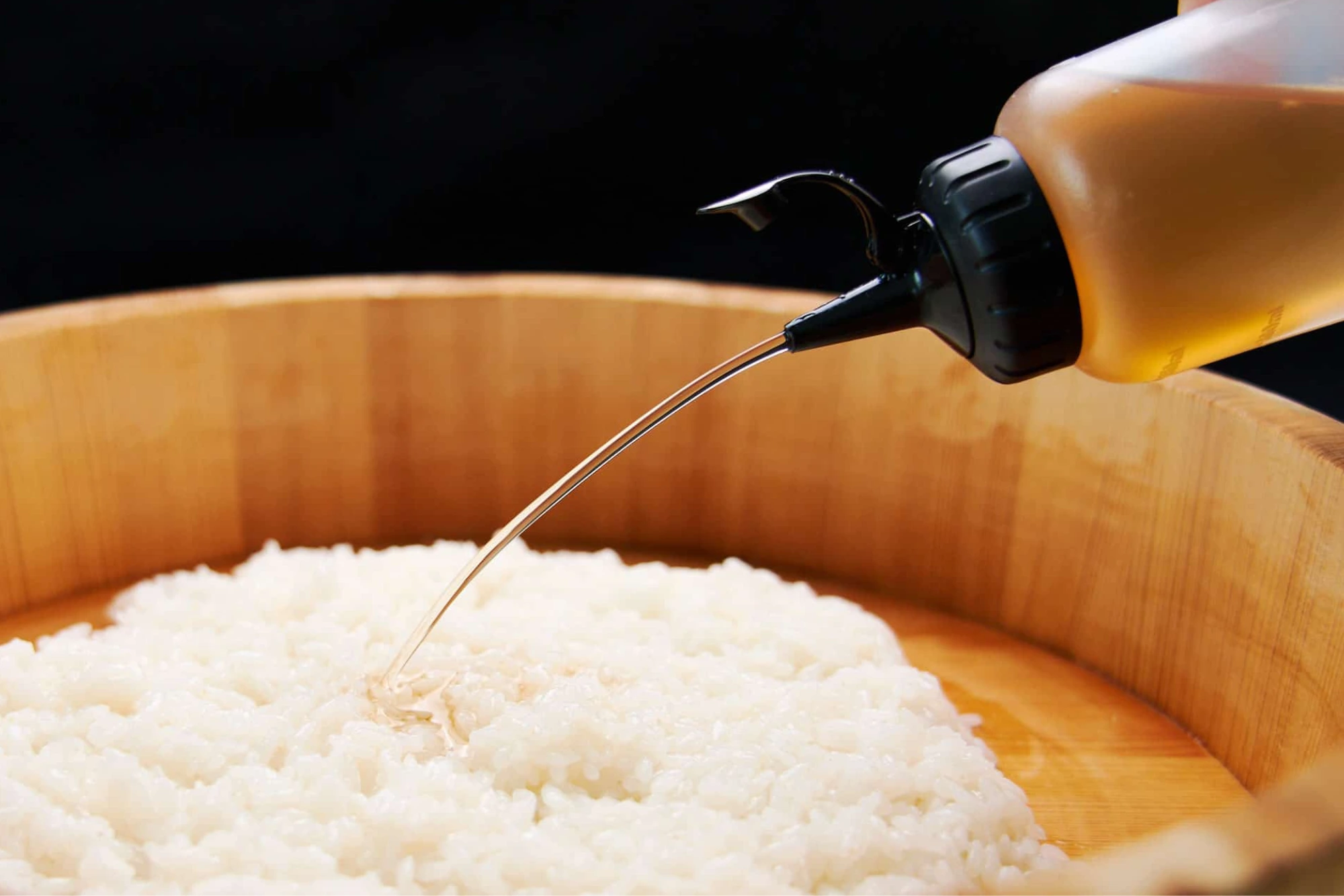Crafting perfect sushi rice requires quality ingredients – especially the right rice vinegar. This Japanese staple lends tangy flavor, aids cooking, and impacts texture. With so many rice vinegar options available, how do you know which bottles bring authentic flavor?
Use this guide to master vinegar selection and level up your sushi skills.
The Role of Rice Vinegar
Before diving into specific products, it’s helpful to understand rice vinegar’s importance in sushi rice:
Flavor
Rice vinegar provides signature tangy, bright taste in seasoned sushi rice. It balances the rice’s sweetness.
Texture
Vinegar acids soften rice grains for stickier, smoother consistency to hold rolls together.
Color
Clear vinegar adds a glossy sheen and subtle shine to finished sushi rice.
Palate Cleanser
The mild acidity cleanses the palate between bites of fish, refreshing the taste buds.
Storage
Vinegar acts as a preservative, preventing bacterial growth during sushi rice storage.
With a combination of flavor enhancement, textural improvements, visual appeal, and food safety, rice vinegar is truly essential to sushi perfection.
Types of Rice Vinegar
There are a few basic rice vinegar varieties, each imparting unique qualities:
White Rice Vinegar
Clear, mild, inexpensive; ideal for seasoning sushi rice.

Red Rice Vinegar
Roasted red rice creates a deeper, mellower tone.

Black Rice Vinegar
Fermented black rice contributes an earthy, complex flavor.

Brown Rice Vinegar
Higher acidity levels and nutty essence from brown rice.

Organic Rice Vinegar
Made from organically grown rice; non-GMO, less processed.

Seasoned Rice Vinegar
Infused with sugar, salt, and sake for a dipping sauce.

For most sushi, opt for a light white (or pale yellow) rice vinegar closest to authentic Japanese flavors.
Key Characteristics
When evaluating rice vinegars, look for these favorable qualities:
Acidity Level
Ideally 4-5% for just the right tartness and pH-lowering ability.
Aroma
Light and mildly acidic without a harsh vinegar bite.
Flavor
Notes of sweetness and umami blend for a well-rounded profile.
Clarity
Crystal clear liquid without any sediment or particles.
Processing
Slow fermentation boosts enzymes, nutrients, and complexity of flavor.
Bottling
Avoid metal containers which can impart a metallic taste.
Origin
Japanese rice vinegars offer authenticity.
Assessing these factors helps identify nuanced, premium rice vinegars to spotlight the taste.
What to Avoid
Stay away from rice vinegars with these undesirable traits:
High Acidity
Levels over 5% overpower flavor with sharp acidity.
Impurities
Sediment or debris create off flavors and textures.
Added Sugar
Excess sugar masks nuanced rice flavor.
Dilution
Watered-down versions lack depth and intensity.
Short Fermentations
Fast production increases flaws and rough edges.
Preservatives
Additives introduce unnatural taste and mouthfeel.
Low-Quality Rice
Cheap grains yield inferior aroma and complexity.
Bitterness
Some vinegars have a sour, unpleasant aftertaste.
Inspecting bottles closely and reading labels helps steer clear of rice vinegars with noticeable defects.
Tips for Tasting and Testing
Before stocking up on a large bottle, conduct a little taste test:
Color
Look for clear, light liquid. Avoid dark vinegars and sediment.
Aroma
Give it a sniff. Seek bright, pure rice essence without harsh acidity.
Texture
Swirl a sip in your mouth. Ideal vinegar is smooth, not watery.
Flavor
Taste for subtle sweetness countering the tartness. No bitterness.
Mouthfeel
Seek a round, polished finish without rough edges.
Acidity
Note the acid level. It should invigorate without overwhelming.
Overall
Evaluate the overall blend and balance of sweet, sour, and umami.
Taking a moment to critically taste delivers insight into the limitations of lower-quality vinegar.
Recipe Adjustments Based on Vinegar
The right vinegar balances perfectly with the sweet rice. But if your vinegar veers off target, make these tweaks:
Too Tart
Cut back on vinegar by a tablespoon per batch until flavor balances.
Too Mild
Add a splash more vinegar if rice needs a more tangy bite.
Watery
Reduce vinegar amount to account for thinner liquid.
Sweet
Consider cutting back slightly on sugar to balance sweetness.
Salty
Skip any added salt to prevent an overly salty result.
Thick
Add a touch more vinegar so it fully penetrates rice.
Don’t be afraid to adjust to suit your chosen vinegar. Portion tweaks can optimize its impact.
Helpful Additions to Balance Flavor
For vinegars that need a flavor boost, try blending in:
Sake
1 Tbsp mellows harshness and contributes sweetness.
Kombu Tea
Umami-rich seaweed tea amplifies savory depth.
Lemons
1 tsp juice adds a bright citrus note.
Ginger
Grated or juice to spice up one-dimensional vinegar.
Garlic
Minced or roasted garlic punch up vinegar with aromatic flavor.
White Pepper
A pinch cuts bitterness and finishes with subtle heat.
Honey
1 tsp harmonizes by rounding tartness and edges.
These small additions can work magic, transforming a mediocre vinegar into a sensational one.
Rice Vinegar Storage Tips
Once opened, vinegar stays fresh for about 1 year. Maximize shelf life with these storage guidelines:
Cool, Dark Cabinet
Avoid exposing vinegar to heat and light, which can cause flavor loss.
Tightly Closed
Seal the lid tightly to prevent evaporation and oxidation.
Smaller Container
Transferring to a small bottle reduces air exposure.
Refrigeration
A cool environment keeps vinegar lively.
Glass Bottles
Inert glass won’t impart flavors like plastic can.
With the proper storage conditions, rice vinegar quality persists batch after batch.
Sushi Rice Perfection Within Reach
Having the full picture on rice vinegar equips you to select the best bottle to bring authenticity and balance to your sushi rice. Seek out trusted Japanese brands, pay close attention to aroma, clarity, and acidity, and fine-tune recipes to suit the vinegar profile. With the right vinegar as your secret ingredient, fluffy, tangy sushi rice is imminent. Remember – true sushi mastery starts with what’s in the bottle.
